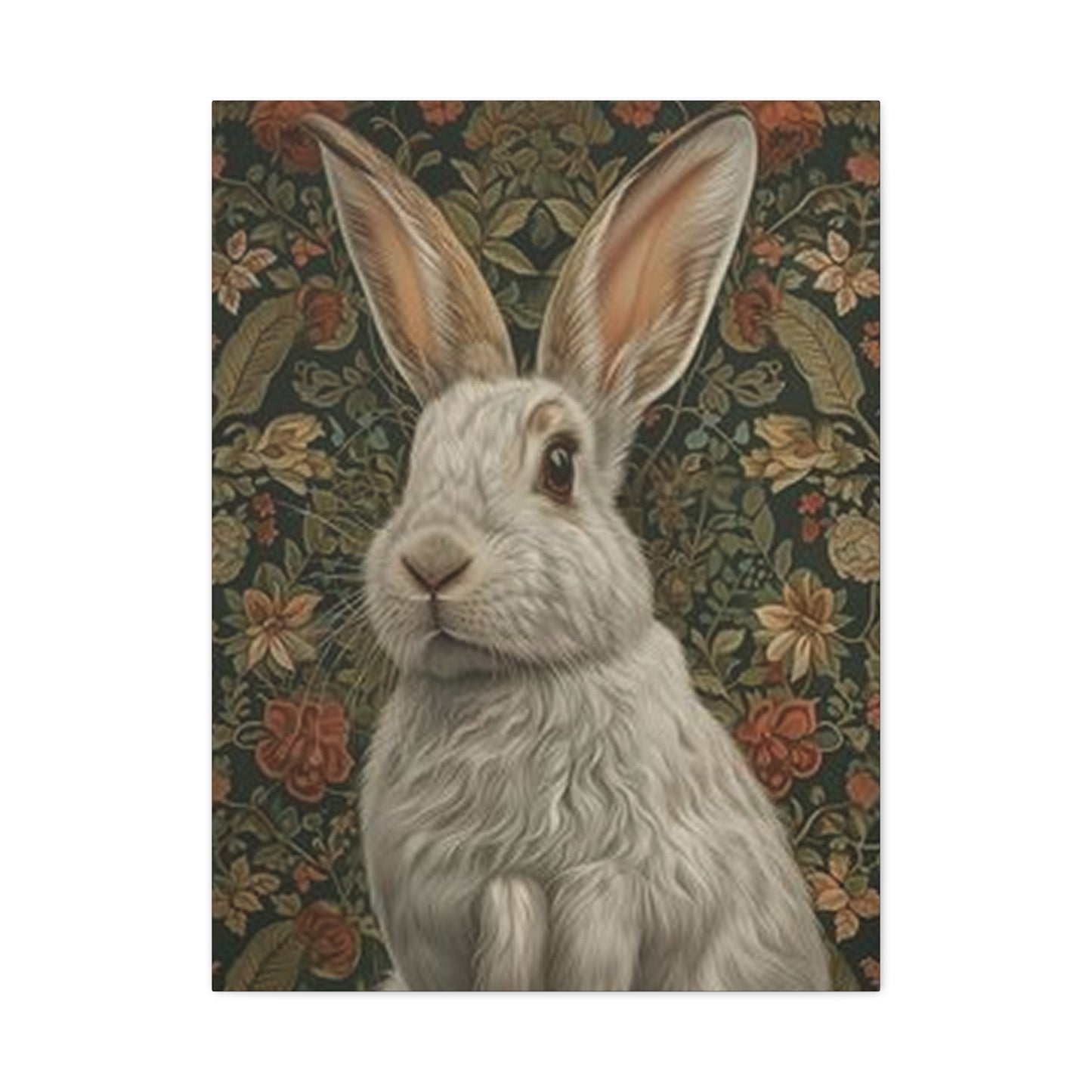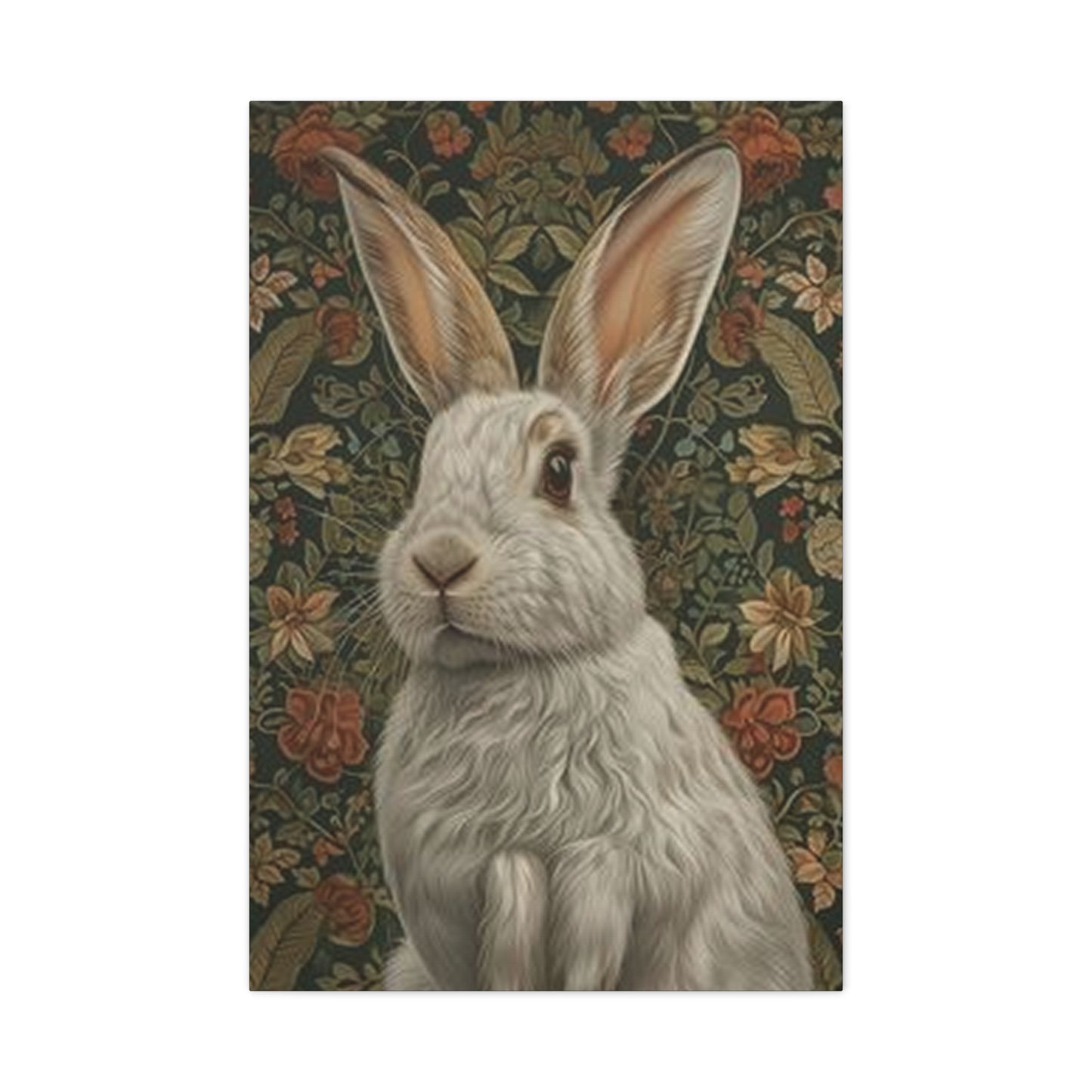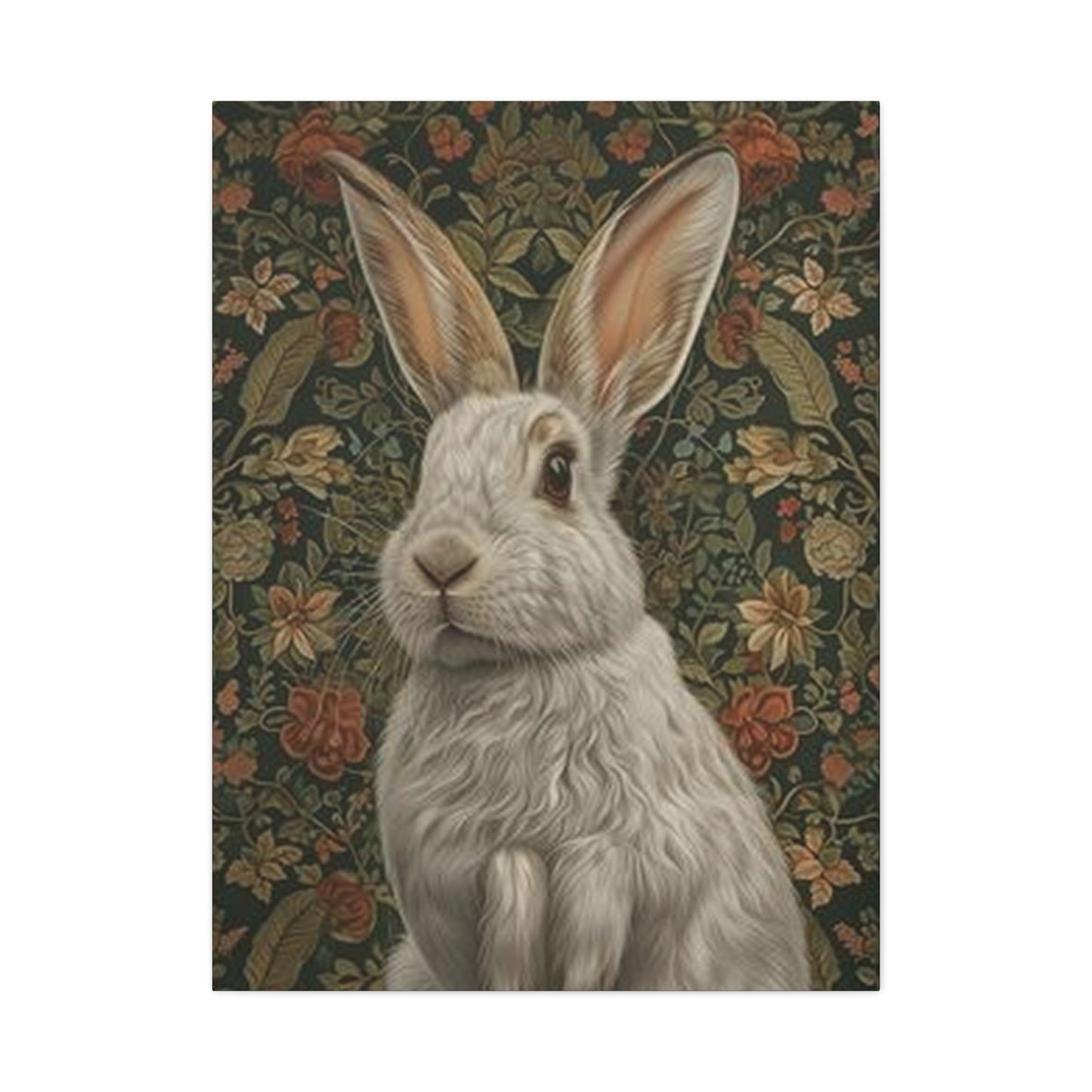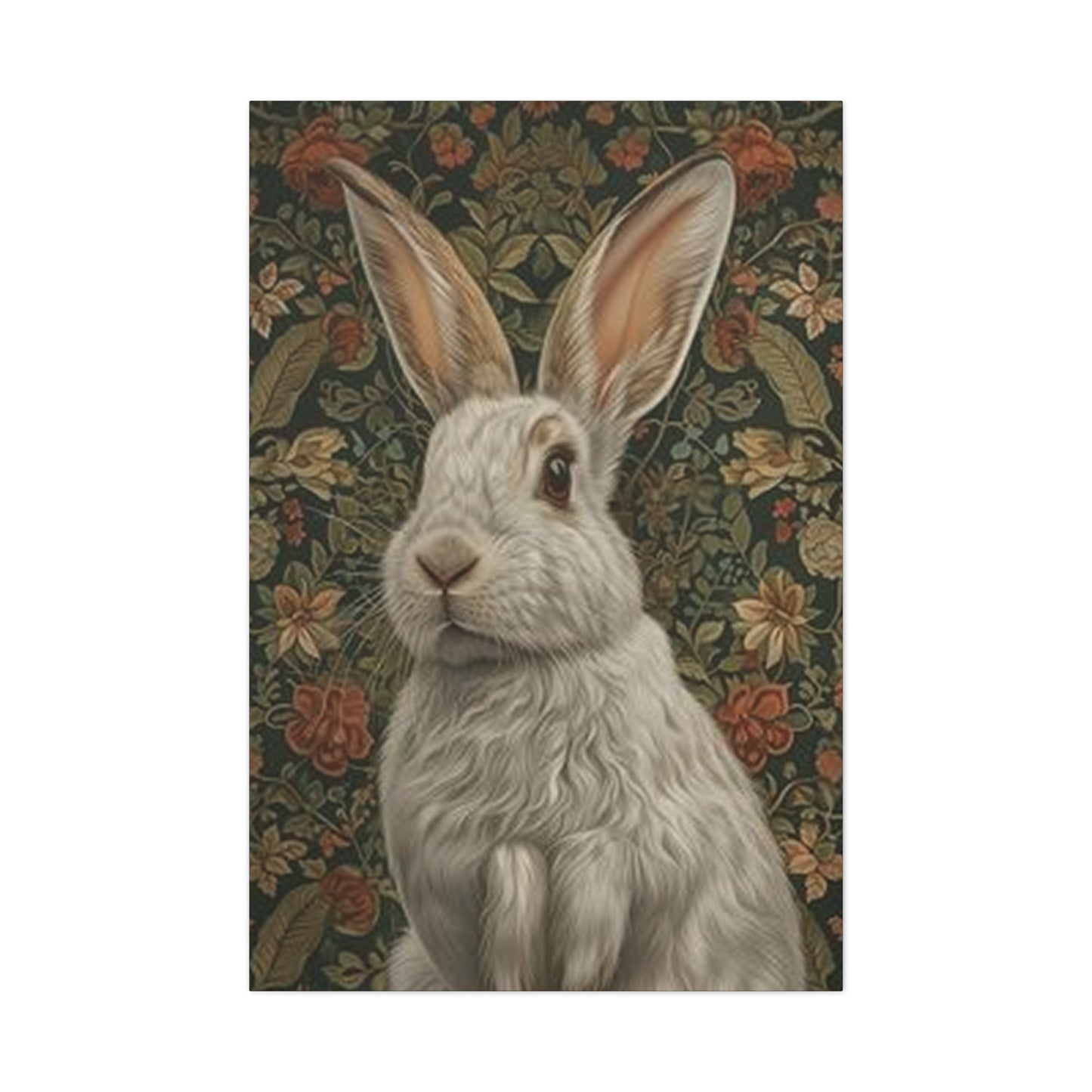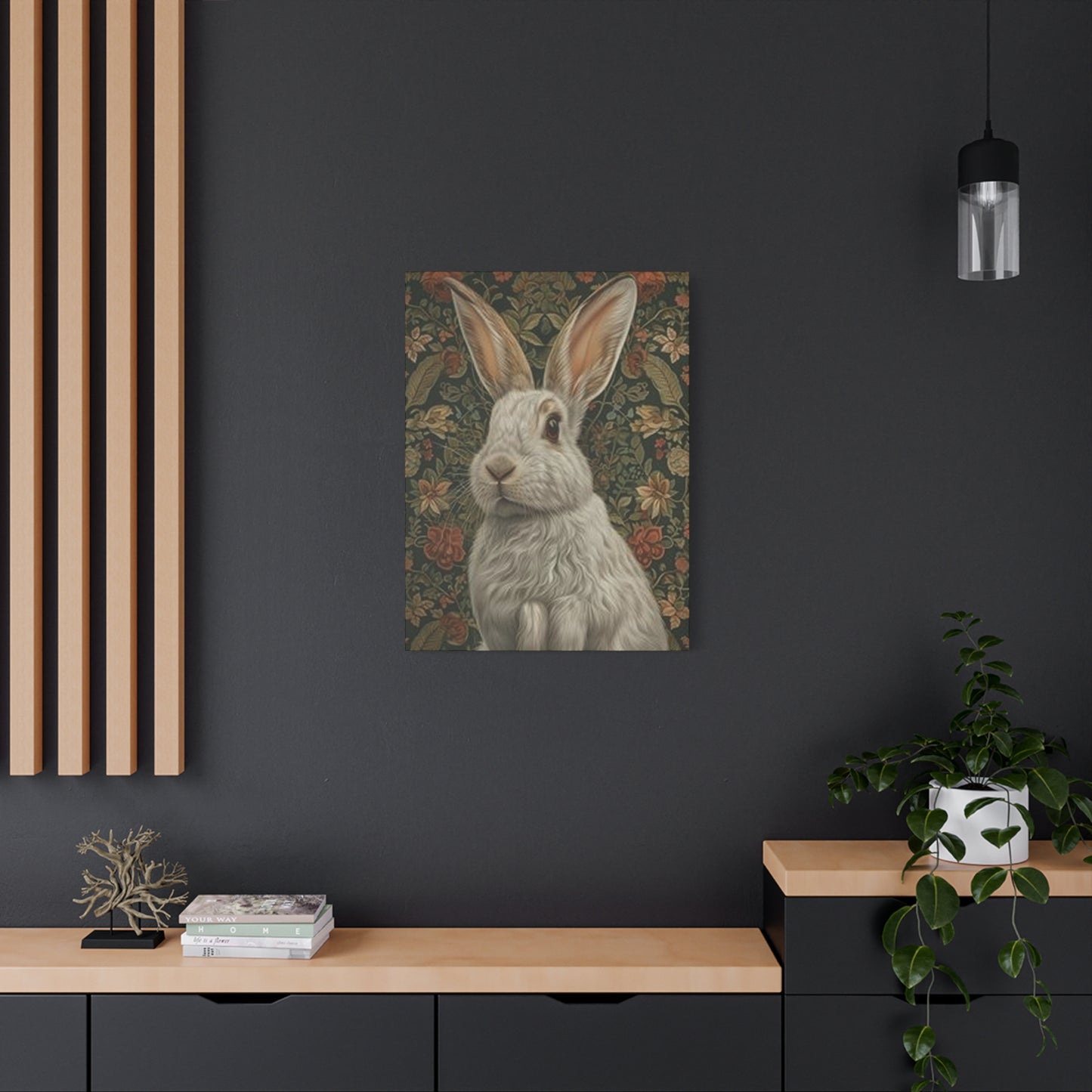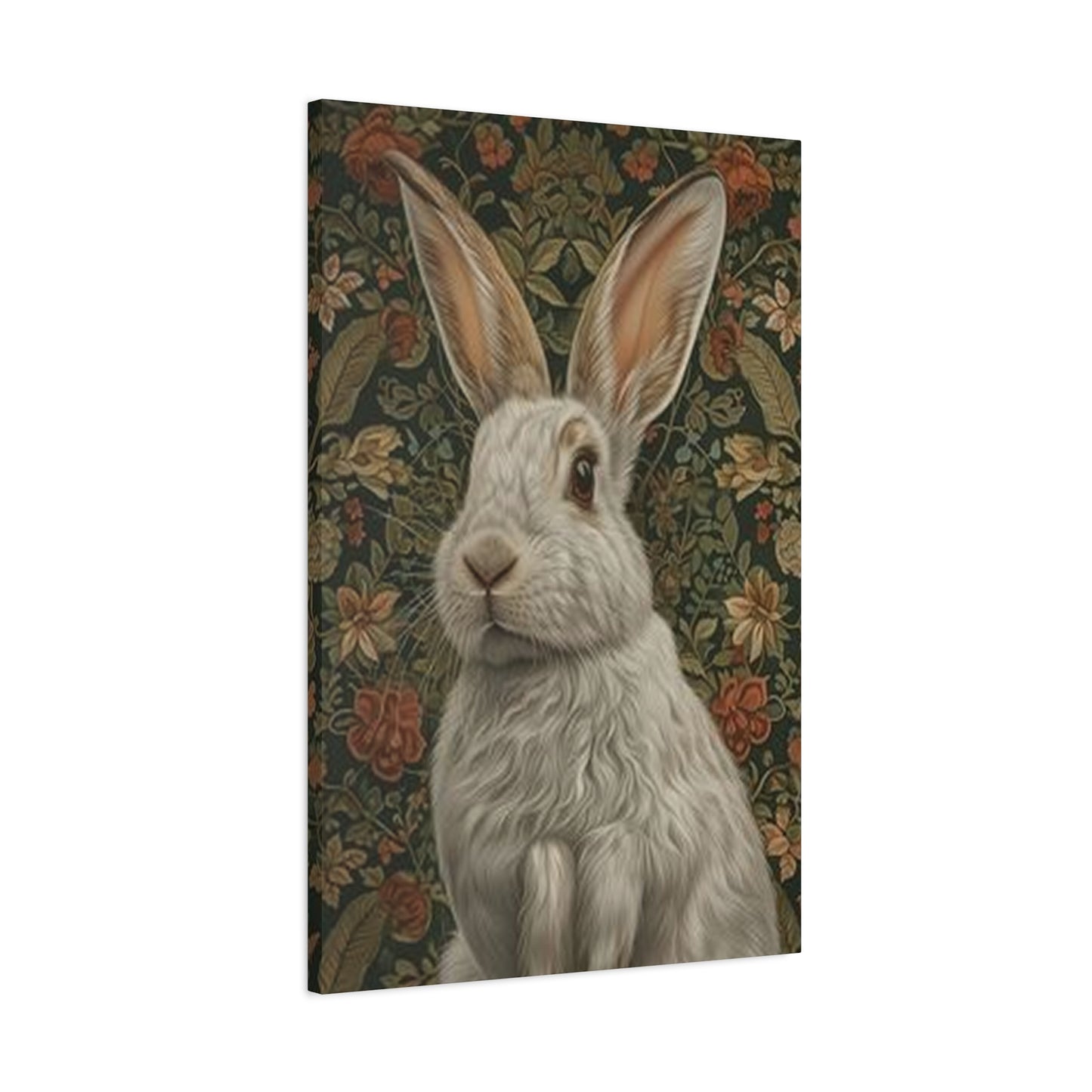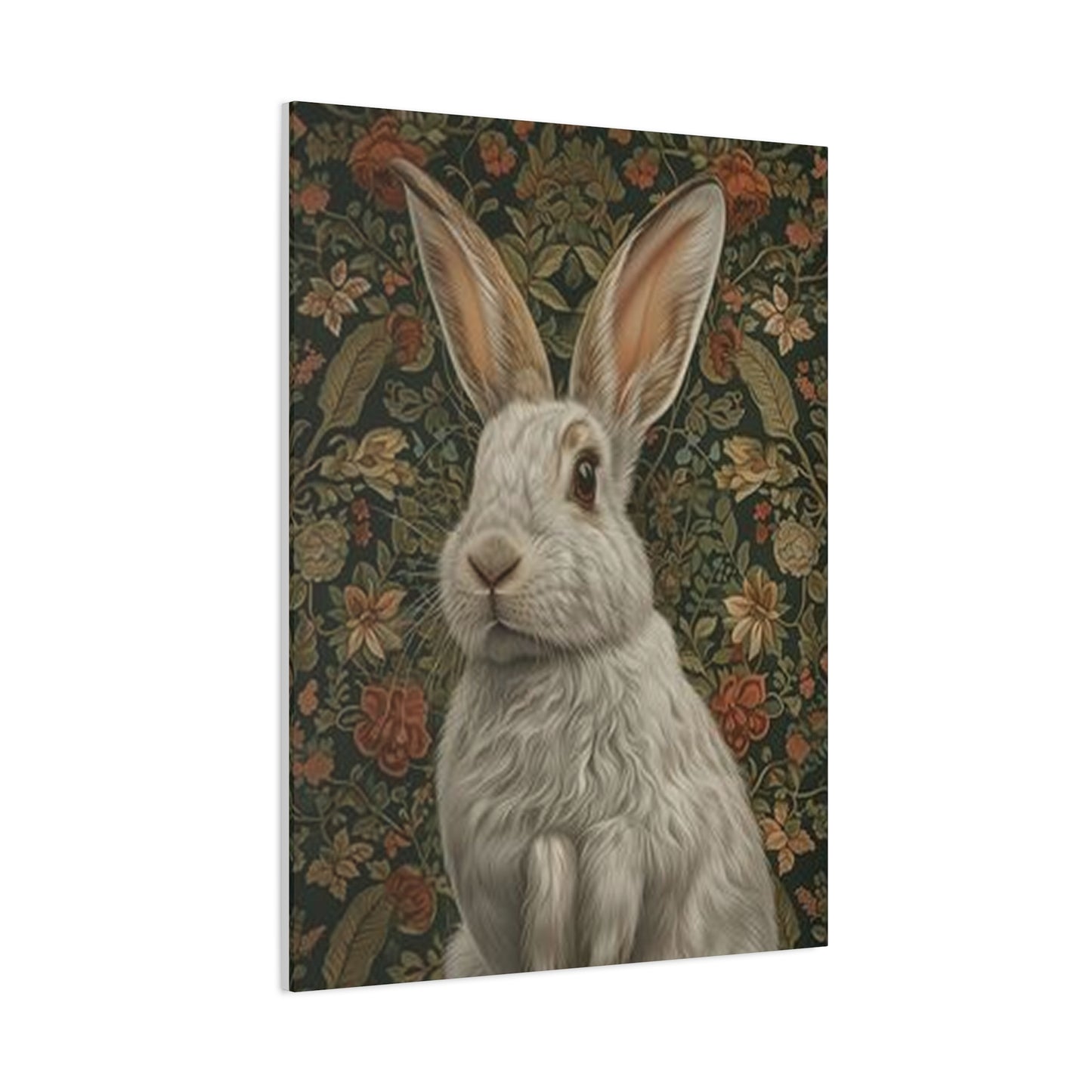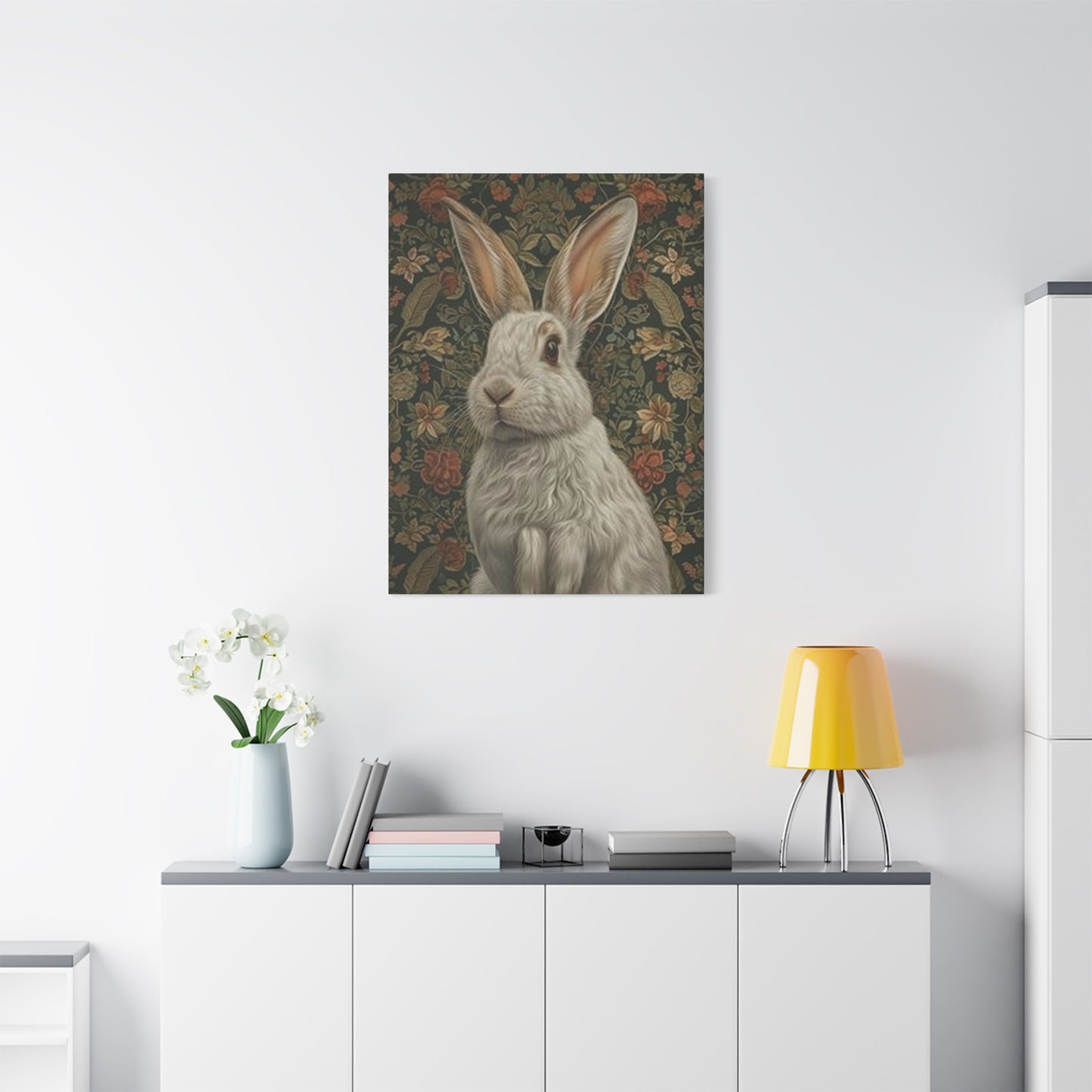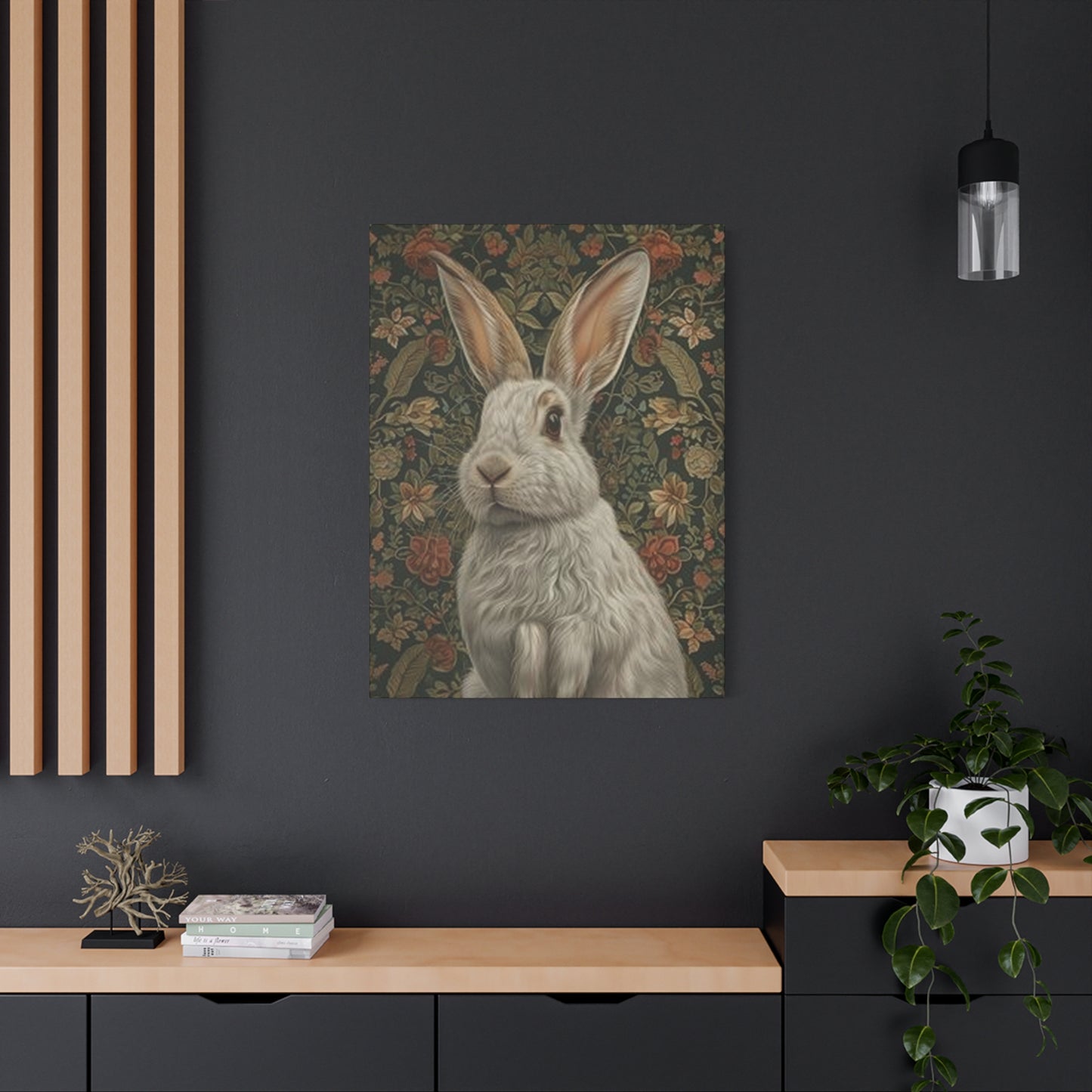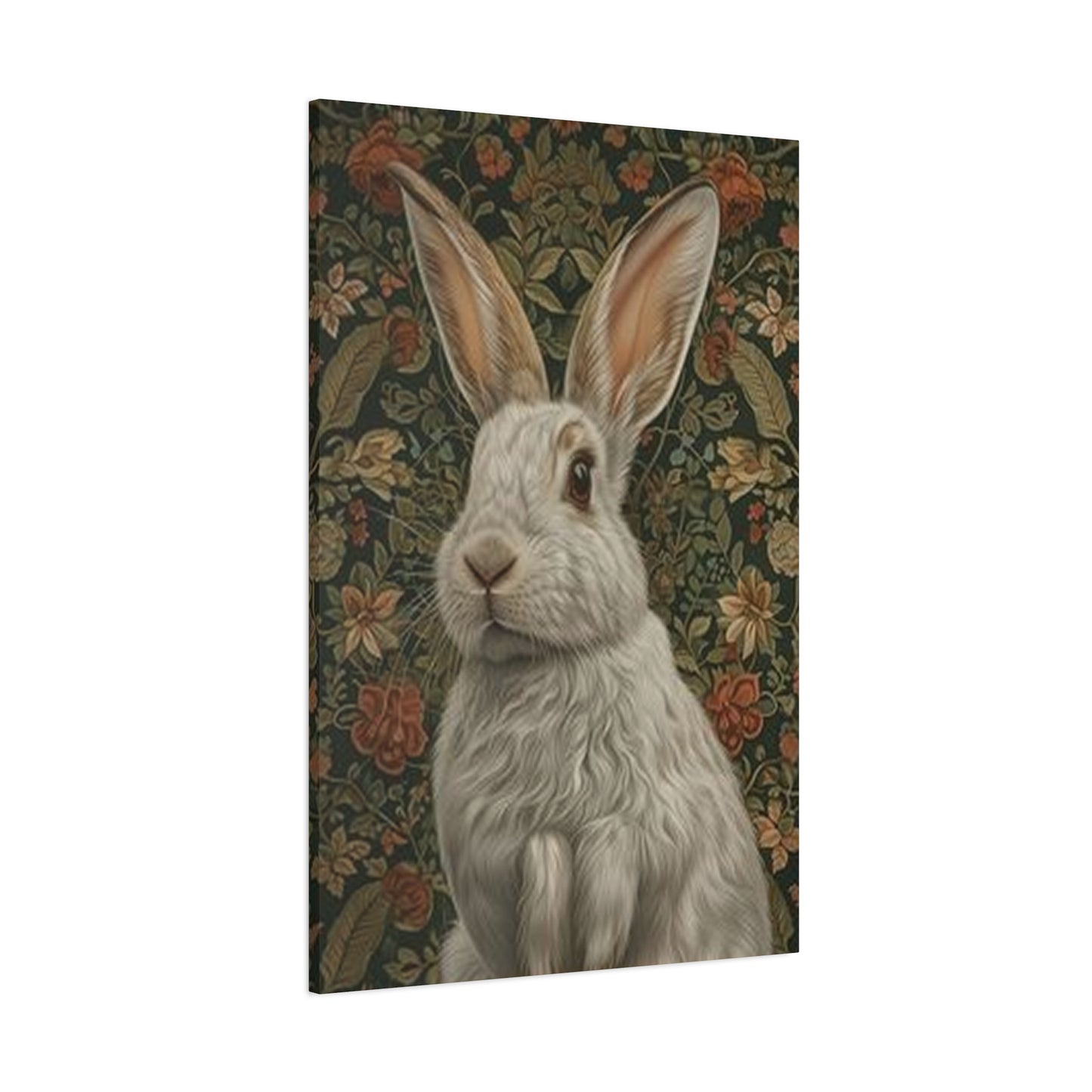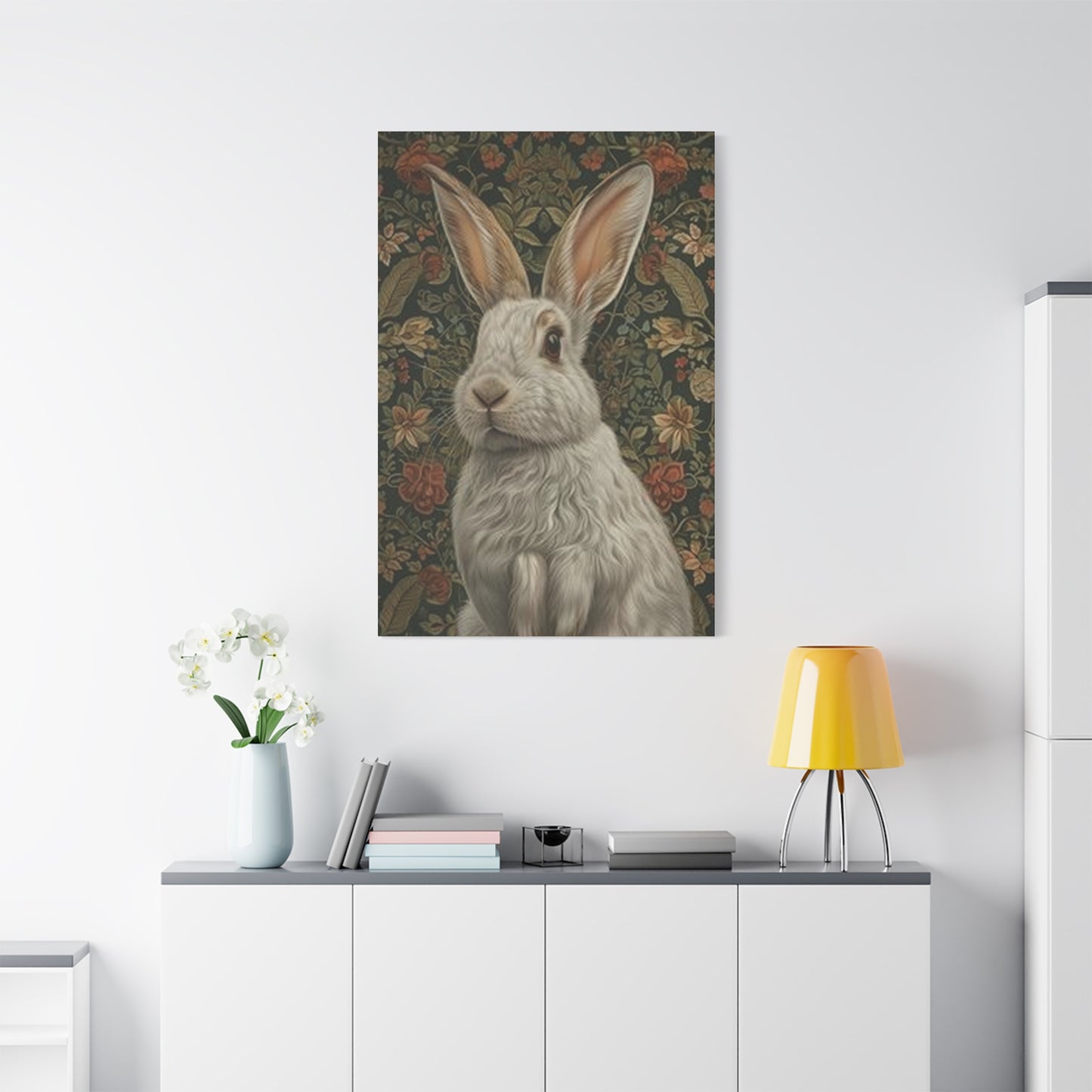Perfect for Nurseries and Children's Rooms: The Delight of White Bunny Wall Art
Decorating your home with animal-themed artwork has become increasingly popular, and white bunny wall art canvas prints stand out as particularly enchanting choices for various interior settings. These delightful pieces bring a sense of warmth, innocence, and natural beauty to any room, making them perfect for nurseries, bedrooms, living rooms, and even office spaces. The soft, gentle imagery of white rabbits captured on canvas creates an inviting atmosphere that appeals to people of all ages.
Canvas prints featuring white bunnies offer versatility in design and style, ranging from realistic photographic representations to whimsical illustrations and abstract interpretations. The pristine white fur of rabbits provides artists and photographers with excellent subject matter that translates beautifully onto canvas material. Whether you prefer minimalist Scandinavian aesthetics, farmhouse charm, or contemporary sophistication, white bunny canvas prints can complement numerous decorating schemes while adding character and visual interest to your walls.
The appeal of these artworks extends beyond their aesthetic value. White rabbits symbolize various positive attributes across different cultures, including purity, fertility, prosperity, and new beginnings. Incorporating such meaningful imagery into your living environment can create a space that feels both personally significant and visually appealing. Furthermore, canvas prints offer practical advantages over traditional framed artwork, including lightweight construction, durability, and the ability to create a gallery-wall effect without the need for heavy frames or extensive installation efforts.
Why White Bunny Canvas Art Appeals to Different Age Groups
White bunny canvas prints possess a universal charm that transcends age boundaries, making them suitable for everyone from infants to elderly individuals. For young children, these gentle creatures represent friendly, approachable animals that often feature in beloved storybooks and cartoons. The soft, fluffy appearance of white rabbits naturally attracts children's attention and can help create a calming, nurturing environment in nurseries and playrooms. Parents often select these prints knowing they will grow with their children, remaining relevant and appreciated as kids mature.
Teenagers and young adults appreciate white bunny artwork for different reasons, often drawn to more sophisticated interpretations that align with current design trends. Modern minimalist representations of rabbits in monochromatic color schemes appeal to this demographic, who seek artwork that reflects their developing personal style. The Instagram-worthy quality of well-designed bunny prints also makes them popular among younger generations who value aesthetically pleasing living spaces worthy of sharing on social media platforms.
Middle-aged adults frequently choose white bunny canvas prints as part of broader home renovation or redecorating projects. These individuals often appreciate the versatility of such artwork, recognizing how it can complement existing furniture and color schemes while adding a touch of personality without overwhelming a space. The nostalgic element cannot be overlooked either, as many adults fondly remember childhood experiences with rabbits, whether as pets, characters in favorite stories, or symbols of holidays and celebrations.
Senior citizens find joy in white bunny canvas prints for their gentle, comforting presence. The serene nature of these images can evoke pleasant memories and create a peaceful atmosphere conducive to relaxation and contemplation. Additionally, the simplicity and clarity of bunny imagery make these prints easy to appreciate without requiring intense focus or interpretation, which many older individuals prefer in their home decor selections.
The emotional connection people form with animal imagery plays a significant role in the widespread appeal of white bunny canvas prints. Research in environmental psychology suggests that natural elements, including animal representations, can reduce stress levels and improve overall mood. White rabbits, with their association with gentleness and innocence, provide these psychological benefits while maintaining a sophisticated aesthetic that works in adult-oriented spaces.
Different Artistic Styles Available in White Bunny Canvas Prints
The world of white bunny canvas art encompasses an impressive range of artistic styles, ensuring that every taste and preference can be accommodated. Photographic realism represents one of the most popular categories, featuring high-resolution images of actual white rabbits captured in various poses and settings. These prints showcase the natural beauty of rabbit fur, the expressiveness of their eyes, and the delicate structure of their ears and whiskers. Professional wildlife photographers spend considerable time observing and photographing rabbits to capture moments that reveal the animals' personalities and behaviors.
Watercolor-style bunny prints offer a softer, more artistic interpretation that appeals to those who prefer a romantic or whimsical aesthetic. These pieces often feature gentle color washes, subtle gradations, and a dreamy quality that works particularly well in feminine spaces, nurseries, and bedrooms. The fluid nature of watercolor techniques allows artists to capture the essence of rabbits while leaving room for imagination and interpretation. Many watercolor bunny prints incorporate floral elements, creating compositions that celebrate the connection between animals and nature.
Minimalist line drawings have gained tremendous popularity in recent years, reflecting broader trends in contemporary interior design. These prints reduce the rabbit form to its essential lines and shapes, creating clean, modern artwork that complements Scandinavian, Japanese, and other minimalist design philosophies. The simplicity of these pieces allows them to integrate seamlessly into spaces without competing with other decorative elements, making them ideal for those who practice restraint in their decorating approach.
Abstract interpretations of white rabbits push creative boundaries, transforming recognizable animal forms into artistic expressions that emphasize color, shape, and emotion over literal representation. These prints appeal to collectors and decorators who appreciate contemporary art and seek conversation-starting pieces that challenge conventional notions of animal artwork. Abstract bunny prints might incorporate bold color splashes, geometric patterns, or experimental techniques that reimagine the subject in unexpected ways.
Vintage and retro-style bunny prints draw inspiration from mid-century illustrations, antique botanical prints, and nostalgic advertising imagery. These pieces often feature muted color palettes, distressed textures, and classic composition techniques that evoke earlier eras. Such prints work beautifully in farmhouse-style interiors, shabby chic spaces, and homes decorated with antique or vintage furnishings. The timeless quality of these designs ensures they remain relevant despite changing decorating trends.
How to Select the Right Size Canvas Print for Your Space
Choosing the appropriate size for your white bunny canvas print requires careful consideration of multiple factors, including wall dimensions, room size, viewing distance, and surrounding decor elements. A common mistake involves selecting artwork that is too small for the intended space, resulting in a piece that appears insignificant or gets lost among other room elements. Conversely, oversized prints in compact spaces can feel overwhelming and disrupt the room's visual balance.
For focal wall applications, where the canvas print serves as the primary visual element, designers typically recommend selecting a piece that occupies approximately sixty to seventy-five percent of the furniture width below it. For example, if you plan to hang your white bunny canvas above a sofa measuring eighty inches wide, your artwork should measure between forty-eight and sixty inches across. This proportion creates a visually pleasing relationship between the furniture and artwork while ensuring the print commands appropriate attention without overpowering the space.
Small white bunny canvas prints, typically measuring between eight and sixteen inches, work well in intimate spaces such as powder rooms, small entryways, or as part of gallery wall arrangements. These compact pieces can also be displayed on shelves, mantels, or built-in bookcases, offering flexibility in placement and allowing for easy seasonal rotations. Despite their modest dimensions, well-designed small prints can deliver significant visual impact when properly positioned and lit.
Medium-sized canvas prints, ranging from eighteen to thirty-six inches, represent the most versatile category, suitable for bedrooms, dining areas, home offices, and secondary living spaces. These dimensions provide enough presence to be noticed and appreciated without requiring extensive wall space or dominating the room. Medium prints work particularly well when displayed in pairs or small groupings, creating visual interest through repetition while maintaining cohesion.
Large white bunny canvas prints, measuring forty inches or more in any direction, make bold statements appropriate for spacious living rooms, master bedrooms, and open-concept areas. These substantial pieces function as room anchors, drawing the eye and establishing visual hierarchy within the space. When selecting large-format prints, consider ceiling height as well as wall width, ensuring the artwork maintains appropriate proportions relative to the room's vertical dimensions.
Extra-large and oversized canvases exceeding sixty inches cater to dramatic interior settings with high ceilings and expansive wall surfaces. These impressive pieces often feature in contemporary lofts, modern farmhouses, and luxury residential spaces where making a significant design statement takes priority. The impact of such large-scale bunny artwork extends beyond mere decoration, transforming walls into focal points that define the room's character and atmosphere.
Advantages of Canvas Material for Bunny Wall Art
Canvas material offers numerous benefits that make it the preferred medium for white bunny wall art, surpassing alternatives like paper prints, metal prints, or framed posters in several important categories. Understanding these advantages helps decorators make informed decisions about their artwork investments and appreciate the value canvas brings to their interior environments. The unique properties of canvas contribute to both the aesthetic appeal and practical functionality of bunny prints.
The textured surface of canvas adds dimension and visual interest that flat paper prints cannot replicate. This texture catches light differently throughout the day as natural and artificial lighting conditions change, creating subtle variations in how the artwork appears. For white bunny prints specifically, canvas texture can enhance the perception of fur softness and animal dimensionality, making the subject feel more tangible and present. The weave pattern of quality canvas provides an artistic foundation that complements various printing techniques and artistic styles.
Durability represents a significant advantage of canvas prints, which resist tearing, wrinkling, and damage far better than paper alternatives. This resilience makes canvas ideal for high-traffic areas, children's rooms, and spaces where artwork might be accidentally bumped or touched. The fabric construction allows canvas to absorb minor impacts without permanent damage, while paper prints tear or crease easily under similar conditions. For families with children or pets, this durability provides peace of mind and better long-term value.
The gallery-wrap mounting technique commonly used for canvas prints eliminates the need for separate frames, creating a clean, contemporary presentation that works across multiple decorating styles. The printed image extends around the sides of the wooden stretcher frame, creating a three-dimensional object rather than a flat picture. This frameless presentation reduces visual clutter and allows multiple canvas prints to be grouped closely without competing frame styles or colors creating confusion. The simplified aesthetic appeals to modern sensibilities while reducing overall costs compared to custom framing options.
Canvas prints offer superior color reproduction and depth compared to standard paper printing, particularly when using modern giclée printing techniques. The fabric surface accepts and holds ink differently than paper, allowing for richer blacks, more vibrant colors, and smoother gradations. For white bunny artwork, this translates to better representation of subtle fur details, more accurate rendering of soft shadows, and enhanced overall realism. The archival quality of properly produced canvas prints ensures colors remain true for decades with proper care.
Creating Gallery Walls Featuring White Bunny Canvas Prints
Gallery walls represent one of the most popular and effective ways to display white bunny canvas prints, allowing for creative expression while maximizing visual impact through thoughtful composition. These curated collections of artwork transform blank walls into dynamic displays that reveal personality, taste, and attention to design detail. Successful gallery walls balance various elements including size, spacing, color, and theme to create cohesive presentations that feel intentional rather than random.
Planning represents the crucial first step in gallery wall creation, requiring careful consideration of available wall space, desired overall dimensions, and the number of pieces you wish to include. Begin by measuring your wall area and marking the boundaries of your intended gallery space using painter's tape. This visualization technique helps you understand the scope of your project and prevents overshooting dimensions or creating arrangements that feel cramped or sparse. Photographing your taped outline from various distances provides additional perspective on how the finished gallery will appear.
Selecting pieces for your white bunny gallery wall involves balancing uniformity and variety to create visual interest without chaos. You might choose to feature exclusively bunny-themed prints in various sizes and styles, or incorporate complementary imagery such as other woodland animals, floral elements, or nature scenes that relate thematically. Maintaining some consistent element throughout the collection, whether color palette, frame style, or artistic medium, helps unify the display while allowing individual pieces to shine.
Arranging gallery wall components requires attention to balance, weight distribution, and visual flow. Begin with your largest or most important piece, typically positioned at or slightly below eye level, then build outward symmetrically or asymmetrically depending on your aesthetic preference. Maintaining consistent spacing between pieces, usually two to three inches, creates a polished, professional appearance. Creating a full-scale mockup on the floor before committing to wall placement allows you to experiment with different arrangements without creating unnecessary holes in your walls.
Symmetrical gallery walls appeal to those who prefer orderly, traditional aesthetics, with artwork arranged in balanced grids or geometric patterns. This approach works well in formal spaces and with architectural features like fireplaces or built-in furniture that establish central axes. A symmetrical gallery featuring white bunny prints might place a large central piece flanked by matching smaller prints on each side, creating a calming, predictable visual rhythm that many find appealing.
White Bunny Canvas Prints in Different Interior Design Styles
White bunny canvas prints demonstrate remarkable versatility across diverse interior design styles, adapting to varied aesthetic approaches while maintaining their essential charm and appeal. Understanding how these prints function within different decorating philosophies helps homeowners select appropriate pieces and integrate them effectively into existing design schemes. The adaptability of bunny artwork makes it valuable for both committed style adherents and eclectic decorators who blend multiple influences.
Scandinavian interiors, characterized by minimalism, functionality, and connection to nature, provide ideal settings for white bunny canvas prints. The Nordic aesthetic emphasizes clean lines, neutral palettes, and organic elements, all of which align perfectly with simple, elegant bunny artwork. Photographic prints featuring white rabbits against pristine white or natural wood backgrounds complement the Scandinavian approach beautifully, adding gentle visual interest without disrupting the serene, uncluttered atmosphere these spaces cultivate. The symbolic association between rabbits and nature reinforces the Scandinavian value of bringing the outdoors inside.
Farmhouse style, with its emphasis on rustic charm, vintage elements, and comfortable livability, welcomes white bunny canvas prints as natural additions. The countryside connection between rabbits and agricultural life makes these prints thematically appropriate while their gentle presence contributes to the warm, welcoming atmosphere farmhouse decorating seeks to achieve. Vintage-style bunny prints with distressed textures or antique illustration aesthetics work particularly well in farmhouse settings, complementing reclaimed wood furniture, shiplap walls, and other signature elements of this popular style.
Contemporary interiors favor clean lines, bold contrasts, and artistic expression, providing opportunities for more adventurous white bunny canvas presentations. Abstract interpretations, oversized photographic prints, or minimalist line drawings suit contemporary spaces where artwork makes strong visual statements without unnecessary embellishment. The juxtaposition of innocent bunny imagery within sophisticated, modern environments creates interesting tension that appeals to decorators who appreciate irony and unexpected combinations. Black-and-white bunny prints particularly excel in contemporary settings, offering graphic impact while maintaining tonal restraint.
Traditional design, characterized by classic furniture, rich colors, and formal arrangements, can accommodate white bunny canvas prints when pieces are selected and presented appropriately. Vintage botanical-style bunny illustrations or classically composed photographic prints work within traditional frameworks without feeling jarring or out of place. Pairing canvas prints with traditional wooden frames or molding treatments helps integrate them into more formal design schemes. The key lies in avoiding overly whimsical or cartoonish bunny representations in favor of dignified, elegant interpretations that respect traditional aesthetic values.
Seasonal Decorating with White Bunny Canvas Prints
White bunny canvas prints offer excellent opportunities for seasonal decorating, allowing you to refresh your space throughout the year while maintaining core design elements. The symbolic associations between rabbits and various seasons make these prints particularly adaptable to changing themes and color palettes. Strategic rotation and supplementation of bunny artwork create dynamic interiors that respond to seasonal shifts without requiring complete redecoration.
Spring represents the most obvious seasonal connection for white bunny canvas prints, as rabbits symbolize renewal, fertility, and new growth associated with this season. The Easter holiday prominently features rabbit imagery, making spring an ideal time to emphasize bunny artwork in your home. Pair white bunny prints with fresh flowers, pastel accents, and light, airy textiles that capture spring's rejuvenating spirit. Watercolor bunny prints featuring floral elements work particularly well during spring months, creating cohesive seasonal displays that celebrate nature's awakening.
Summer decorating with white bunny canvas prints takes on a lighter, breezier character, emphasizing outdoor connections and relaxed living. Consider displaying bunny prints depicting rabbits in garden settings or meadow environments that evoke warm-weather activities and natural abundance. Complementary decor might include botanical prints, natural fiber textiles, and beach-inspired elements that create casual, vacation-like atmospheres. The white base of bunny imagery helps maintain a cool visual temperature appropriate for hot summer months.
Autumn presents opportunities to showcase white bunny prints within harvest-themed displays incorporating earth tones, natural materials, and cozy textures. While rabbits are less strongly associated with fall than other seasons, they fit naturally into harvest and woodland themes that dominate autumn decorating. Pair bunny canvas prints with pumpkins, gourds, autumn foliage, and warm-toned throw pillows to create seasonal vignettes. Vintage or rustic-style bunny prints complement fall aesthetics particularly well, reinforcing connections to agricultural traditions and countryside living.
Winter decorating can incorporate white bunny canvas prints through several thematic approaches. The obvious Christmas and holiday angle features rabbits amid winter landscapes, snow scenes, or alongside evergreen and seasonal decorative elements. The pristine white of bunny fur aligns beautifully with winter's snowy palette, creating monochromatic displays that feel seasonally appropriate. For non-holiday winter decorating, bunny prints contribute to cozy, hygge-inspired themes that emphasize warmth, comfort, and indoor sanctuary during cold months.
Where to Find Quality White Bunny Canvas Prints
Sourcing quality white bunny canvas prints requires understanding the various marketplace options available, each offering different advantages in terms of selection, price, customization, and quality. The dramatic expansion of print-on-demand technology and online marketplaces has created unprecedented access to artwork, yet this abundance also creates challenges in identifying truly high-quality options among countless alternatives. Informed shoppers navigate these options more successfully, making purchases they continue to enjoy rather than regretting later.
Online marketplaces featuring independent artists and photographers provide enormous selection and direct artist support, though quality can vary significantly between creators. These platforms enable artists to upload designs that customers can order printed on various products including canvas. The advantage lies in unique, often artistic interpretations not available through mass-market channels, supporting creative professionals while acquiring one-of-a-kind artwork. Carefully review artist portfolios, customer reviews, and sample images to assess quality before purchasing. Many artists offer different canvas quality tiers, so understand what you are ordering.
Dedicated canvas printing services accept customer-supplied images or offer curated collections designed specifically for their printing processes. These companies specialize in high-quality canvas reproduction, often using superior materials and printing techniques compared to generalist print-on-demand services. While potentially more expensive, the quality difference typically justifies the investment for serious collectors or decorators. Some services offer satisfaction guarantees or sample programs that allow quality assessment before committing to full-size purchases.
Mass-market home decor retailers provide convenient access to affordable white bunny canvas prints, often featuring trendy designs that align with current decorating styles. These options suit budget-conscious shoppers or those decorating temporary spaces like apartments or dorm rooms. Quality varies considerably among mass-market sources, so inspect products carefully before purchasing or understand return policies. The trade-off involves lower prices in exchange for less unique designs and sometimes lower-quality materials and printing.
Art galleries and local art fairs offer opportunities to purchase original canvas paintings of white rabbits or limited-edition prints directly from artists. This approach supports local creative communities while providing highest-quality, truly unique artwork. The personal connection with artists allows for customization, commissioning specific pieces, and developing ongoing relationships with creators whose work you admire. Prices typically exceed online alternatives, reflecting the original nature and artistic value of the pieces.
Combining White Bunny Prints with Other Animal Artwork
Creating cohesive displays that incorporate white bunny canvas prints alongside other animal artwork requires thoughtful consideration of visual balance, thematic relationships, and overall compositional harmony. Multi-species displays offer opportunities for storytelling, educational value, and increased visual interest while presenting challenges in maintaining unity amid diversity. Understanding principles for successful animal artwork combinations enables decorators to create sophisticated, engaging displays that transcend simple collections of unrelated prints.
Woodland and forest animal themes provide natural companionship for white bunny prints, grouping rabbits with deer, foxes, raccoons, owls, and other creatures sharing similar habitats. These combinations create narrative contexts suggesting ecosystems and natural communities rather than isolated subjects. Woodland themes work particularly well in nurseries, children's rooms, and nature-inspired interiors where creating connections to outdoor environments supports broader decorating goals. Maintaining consistent artistic styles across all pieces ensures visual cohesion despite varying subjects.
Farm animal groupings position white bunny prints alongside chickens, goats, sheep, cows, and other domesticated species, creating countryside atmospheres appropriate for farmhouse and rustic interiors. These combinations evoke agricultural heritage and simpler living, appealing to those who romanticize rural life or maintain actual connections to farming. The key lies in balancing different animal sizes and visual weights to prevent any single species from dominating the display. Color coordination across pieces maintains unity while animal variety provides interest.
Minimalist animal portrait series featuring various species rendered in consistent styles create sophisticated, contemporary displays where white bunny prints contribute to larger collections. This approach emphasizes artistic treatment over subject matter, with style uniformity creating cohesion despite animal diversity. Black and white photography series, line drawing collections, or watercolor sets demonstrate this principle effectively. The artistic consistency allows for animal variety without visual chaos, appealing to collectors who appreciate artistic execution as much as subject matter.
Monochromatic animal collections featuring exclusively white or light-colored creatures create elegant, tonal displays where white bunny prints anchor broader groupings. White cats, polar animals, white birds, and pale mammals form cohesive color-based collections that transcend habitat or species relationships. This approach works beautifully in refined, sophisticated interiors where color discipline creates powerful visual impact. The subtle variations between different white animals provide sufficient interest while maintaining remarkable overall unity.
Baby animal themes group infant or young animals across species, creating displays that emphasize cuteness, innocence, and new life rather than ecological relationships. White bunny kits pair naturally with puppies, kittens, chicks, and other young creatures in nurseries, children's boutiques, and spaces celebrating childhood and parenting. The consistent developmental stage creates thematic unity despite species differences, with similar size proportions and innocent expressions reinforcing connections between pieces. These displays tap into powerful protective and nurturing instincts that make them particularly emotionally engaging.
Customizing White Bunny Canvas Prints for Personal Meaning
Personalization transforms white bunny canvas prints from generic decorative items into meaningful artwork that reflects individual experiences, relationships, and values. Various customization approaches allow you to create unique pieces that resonate on deeper levels than mass-produced alternatives. Understanding available customization options and their relative merits helps you develop truly personal artwork that enriches your living environment with layered significance beyond surface aesthetics.
Photographic customization using images of personally significant rabbits creates the most directly meaningful artwork possible. Pet owners who share their lives with rabbits can commission canvas prints featuring their own companions, transforming beloved animals into permanent artistic tributes. Professional pet photographers specialize in capturing animals' personalities and distinctive characteristics, creating source material suitable for high-quality canvas reproduction. Even smartphone photographs can be successfully converted to canvas prints when properly prepared and printed by quality services. These deeply personal pieces commemorate specific relationships rather than generic animal appeal.
Text overlay customization adds names, dates, quotes, or meaningful phrases to white bunny canvas prints, creating commemorative pieces that mark important life events or express personal philosophies. Birth announcements featuring bunny imagery alongside baby names and birthdates become treasured nursery centerpieces that document family milestones. Inspirational quotes paired with gentle bunny visuals create motivational artwork that reinforces personal values and aspirations. The key lies in maintaining design balance where text enhances rather than overwhelms the imagery, with typography choices complementing rather than conflicting with artistic styles.
Color customization modifies existing white bunny designs to match specific color schemes or personal preferences. Many print services offer color adjustment options that allow customers to shift palettes while maintaining artistic integrity. Converting color images to black and white creates dramatic alternatives suitable for monochromatic interiors, while selective colorization emphasizes specific elements. Adjusting background colors to match wall paint or furniture fabrics ensures perfect coordination within existing decorating schemes. These modifications demonstrate how even pre-existing designs can be tailored to individual requirements.
Artistic filter applications transform photographic bunny images into stylized interpretations mimicking watercolor paintings, oil paintings, sketches, or other artistic media. These digital manipulations create art-like appearances from standard photographs, offering artistic sophistication without commissioning original paintings. The effectiveness varies depending on source image quality and filter sophistication, with best results coming from high-resolution photographs processed using advanced software. Understanding your aesthetic preferences guides appropriate filter selection, ensuring results align with intended decorating styles.
Multi-image collage customization combines multiple bunny photographs or mixed bunny and complementary images into unified compositions. This approach works particularly well for commemorating multiple pets, documenting animal growth over time, or creating thematic connections between related images. Effective collages require careful attention to visual balance, color harmony, and compositional flow to avoid cluttered or chaotic appearances. Professional designers can assist in creating sophisticated layouts that maximize individual image impact while maintaining overall unity.
The Symbolism and Cultural Significance of White Rabbits
Understanding the rich symbolism and cultural significance associated with white rabbits adds depth and meaning to white bunny canvas prints, transforming them from simple decorative objects into carriers of cultural narratives and symbolic content. Across diverse cultures and throughout history, rabbits have accumulated complex symbolic meanings that continue influencing contemporary interpretations and emotional responses. Awareness of these associations enhances appreciation for bunny artwork while informing thoughtful selection and placement decisions.
Western European traditions strongly associate rabbits with fertility, abundance, and renewal, connections rooted in observable rabbit reproductive patterns and spring emergence behaviors. Ancient agrarian societies celebrated rabbits as symbols of land fertility and agricultural abundance, associations that persist in modern consciousness. The Easter bunny tradition exemplifies this symbolism, with rabbits representing resurrection, new life, and spiritual renewal within Christian contexts. These positive associations contribute to the widespread appeal of white bunny artwork in Western homes, where they unconsciously reinforce optimistic, life-affirming values.
Celtic mythology featured rabbits as sacred animals associated with moon goddesses, underworld navigation, and transformation between worlds. White rabbits specifically held special significance as messengers or guides facilitating spiritual journeys and communication with divine realms. These mystical associations lend white bunny imagery subtle spiritual dimensions that resonate with individuals drawn to Celtic spirituality, pagan practices, or New Age philosophies. The enduring power of these ancient symbols demonstrates how pre-Christian beliefs continue influencing contemporary culture and aesthetic preferences.
Asian cultural traditions, particularly Chinese symbolism, assign complex meanings to rabbits that differ somewhat from Western interpretations. The rabbit represents the fourth position in the Chinese zodiac, associated with gentleness, elegance, caution, and compassion. Moon mythology features jade rabbits living on the lunar surface, mixing immortality elixirs and representing longevity and virtue. These Eastern associations add layers of meaning for Asian households or Westerners interested in incorporating Asian philosophical perspectives into their living environments. White rabbits specifically emphasize purity and spiritual refinement within these symbolic frameworks.
Photography Techniques That Create Stunning White Bunny Canvas Prints
The quality of source photography fundamentally determines the ultimate success of white bunny canvas prints, with technical execution separating mediocre from exceptional results. Professional photographers employ specific techniques optimized for capturing rabbits in ways that translate beautifully to canvas reproduction. Understanding these methods helps consumers evaluate potential purchases while providing valuable guidance for those photographing their own rabbits for custom canvas printing.
Lighting represents the single most critical factor in rabbit photography, particularly when capturing white-furred subjects where subtle tonal variations provide definition and dimension. Soft, diffused natural light produces the most flattering results, revealing texture and detail without harsh shadows or blown-out highlights. Photographers often work during golden hour periods shortly after sunrise or before sunset when light quality reaches optimal warmth and directionality. Overcast conditions provide naturally diffused light that works beautifully for white subjects, eliminating the contrast challenges associated with direct sunlight.
Background selection significantly impacts final image quality, with photographers carefully controlling environments to eliminate distractions while providing visual interest and context. Clean, simple backgrounds in complementary colors allow white rabbits to stand out clearly without competition from busy surroundings. Natural settings including meadows, gardens, or rustic interiors provide authentic contexts that enhance rather than detract from subjects. The background should support and frame the rabbit rather than dominating attention, maintaining proper visual hierarchy that directs viewer focus appropriately.
Depth of field control through aperture selection determines how much of the image remains in sharp focus, creating either isolated subjects against blurred backgrounds or detailed environmental contexts. Wide apertures producing shallow depth of field create dreamy, artistic effects popular in contemporary animal photography. This technique beautifully isolates white rabbits against softly blurred backgrounds, emphasizing subjects while maintaining contextual information through color and form suggestions. Alternatively, smaller apertures maintaining focus throughout the frame suit documentary or environmental portraits where setting details matter equally to subject representation.
Composition techniques including rule of thirds, leading lines, and negative space application create visually balanced, professionally polished images suitable for canvas printing. Positioning rabbits slightly off-center rather than dead-center creates more dynamic, interesting compositions that draw viewers into images. Incorporating environmental elements that guide eyes toward subjects enhances visual flow and narrative quality. Negative space around subjects prevents cramped, claustrophobic feelings while providing breathing room that enhances rather than diminishes impact.
White Bunny Canvas Prints in Children's Room Design
Designing children's spaces presents unique opportunities and considerations for incorporating white bunny canvas prints, with developmental appropriateness, safety, and longevity influencing selection and installation decisions. Children's rooms serve multiple functions including sleep, play, study, and personal expression, requiring artwork that supports these varied activities while remaining visually cohesive. White bunny prints offer particular advantages in children's environments through their gentle appeal, versatility, and ability to grow with children through different developmental stages.
Age-appropriate selection ensures artwork resonates with children's current interests and developmental stages while maintaining relevance as they mature. Infants and toddlers respond positively to simple, high-contrast images featuring recognizable shapes and friendly faces. White bunny prints with minimal backgrounds and clear subject presentation work well for youngest children developing visual processing skills. Preschool and early elementary ages appreciate more detailed, narrative artwork incorporating multiple elements and suggesting stories. Older children and teenagers prefer sophisticated interpretations reflecting developing aesthetic sensibilities and personal style preferences.
Safety considerations require particular attention in children's spaces where active play and curiosity create potential hazards absent in adult environments. Canvas prints offer inherent safety advantages through lightweight construction and absence of glass or sharp frame edges. Secure mounting using appropriate hardware prevents prints from falling even when walls are bumped during play. Positioning artwork above typical reach heights of younger children prevents curious fingers from pulling prints down while ensuring visibility from beds and play areas. Regular inspection of hanging systems ensures continued security as children grow and room uses evolve.
Educational opportunities embedded in white bunny canvas prints extend their value beyond simple decoration. Realistic bunny photographs support animal recognition and scientific observation skills, encouraging children to notice anatomical details including ear structure, fur patterns, and body proportions. Habitat-based compositions introduce ecological concepts about where animals live and their relationships to environments. Pairing bunny artwork with children's books featuring rabbit characters creates multi-media learning experiences that reinforce language development and reading motivation. These educational dimensions justify artwork investments as developmental tools rather than mere decoration.
Creating DIY White Bunny Canvas Prints
Do-it-yourself approaches to creating white bunny canvas prints offer creative satisfaction, cost savings, and complete customization control while presenting technical challenges requiring appropriate skills, tools, and materials. Successful DIY canvas printing requires understanding available methods, their respective requirements, and realistic assessment of personal capabilities and resource availability. Whether creating single pieces for personal use or multiple prints for gifting or selling, proper technique ensures results worthy of display and admiration.
Digital printing methods provide the most accessible DIY approach, utilizing home inkjet printers or professional printing services to produce high-quality images for canvas mounting. Consumer-grade printers accommodate canvas-coated paper or thin canvas sheets that can be printed directly, then mounted onto stretcher frames. This approach requires ensuring your printer can handle specialty media without jamming or producing poor-quality results. Printer settings must be adjusted for canvas materials, typically selecting "fine art paper" or similar profiles that maximize ink application and color saturation. Professional printing services offer superior color accuracy and longevity through archival inks and precise color management systems.
Image preparation represents crucial preliminary work determining final print quality. Source images must possess sufficient resolution for intended print sizes, typically requiring minimum 150-200 pixels per inch at actual dimensions. Undersized images stretched to accommodate large canvases produce blurry, pixelated results disappointing after investment of time and materials. Photo editing software allows careful color correction, sharpening, and optimization before printing. Understanding color management and printer profiles ensures printed colors match on-screen appearances as closely as possible, though perfect matching rarely occurs due to fundamental differences between transmitted and reflected light.
Canvas material selection involves choosing between pre-primed stretched canvases, unstretched canvas fabric, or canvas-textured paper depending on chosen method and desired outcome. Pre-stretched canvases ready for painting can be printed on if properly prepared with digital printing compatible coatings. Artist-grade canvas fabric offers superior quality but requires manual stretching over wooden frames after printing. Canvas-textured paper provides economy and convenience at some sacrifice of authentic canvas characteristics. Each option presents distinct advantages and limitations regarding cost, quality, and required skills.
Stretching techniques transform printed canvas fabric into three-dimensional wall art through attachment to wooden stretcher frames. This process requires stretcher bars, canvas pliers, staple guns, and careful technique maintaining even tension across the entire canvas surface. Begin stapling at center points of each side, working outward toward corners while maintaining consistent pull. Corners require special folding techniques creating neat, professional appearances without bulky fabric accumulations. Numerous online tutorials demonstrate proper stretching methods, though mastery requires practice and patience.
Trends in White Bunny Canvas Print Design
Contemporary white bunny canvas print design reflects broader aesthetic movements in home decor, digital art, and popular culture, with evolving styles responding to changing consumer preferences and technological capabilities. Understanding current trends helps decorators make informed selections that feel current and relevant while identifying timeless approaches that transcend temporary fashions. The dynamic nature of design trends ensures continuous innovation and variety in white bunny artwork available to consumers.
Minimalist aesthetics continue dominating contemporary design trends, with white bunny prints reflecting this preference through simplified forms, generous negative space, and restrained color palettes. Single-line drawings capturing rabbit essence through continuous marks exemplify minimalist principles, creating sophisticated artwork from minimal elements. Black and white photography with high-key exposure emphasizes clean, bright aesthetics aligned with Scandinavian and Japanese design philosophies. These stripped-down approaches appeal to consumers overwhelmed by visual clutter seeking peaceful, undemanding artwork.
Bohemian and maximalist reactions against minimalism embrace abundance, pattern, color, and eclectic mixing, creating opposite aesthetic poles within contemporary design. Boho white bunny prints incorporate floral overlays, geometric patterns, and rich colors creating visually complex compositions. Layered, collaged approaches combine photographic bunny images with illustrated elements, textures, and decorative flourishes. These exuberant designs suit personality-driven spaces where more is more and individual expression trumps restrained good taste.
Vintage and nostalgic styling taps into desires for connection with past eras, romanticizing previous aesthetic periods through deliberate anachronism. White bunny prints mimicking antique botanical illustrations, Victorian lithographs, or mid-century advertising art satisfy cravings for authenticity and heritage. Deliberately aged appearances including faded colors, distressed textures, and yellowed backgrounds create impressions of found treasures rather than contemporary reproductions. This trend reflects broader cultural nostalgia during uncertain times when past aesthetics seem comforting and familiar.
Geometric and abstract interpretations push creative boundaries by reimagining recognizable bunny forms through non-representational artistic languages. Cubist-influenced compositions fracture rabbit imagery into geometric planes and angles. Abstract expressionist approaches emphasize gestural mark-making and emotional content over literal representation. These experimental styles appeal to contemporary art enthusiasts seeking challenging, thought-provoking artwork that transcends decorative function. The tension between recognizable subject matter and abstract treatment creates engaging viewing experiences rewarding sustained attention.
Lighting Considerations for Displaying White Bunny Canvas Prints
Proper lighting dramatically impacts how white bunny canvas prints appear and function within interior spaces, with illumination choices affecting color perception, detail visibility, and overall visual impact. Understanding lighting principles and options enables strategic decisions that maximize artwork beauty while protecting against light-induced damage. The interplay between artwork and light represents a crucial design consideration often overlooked by amateur decorators but understood and manipulated by professionals.
Natural lighting provides the most authentic color rendering and the most environmentally sustainable illumination option, though it presents challenges for artwork preservation and appearance consistency. Direct sunlight contains high UV radiation levels that fade printed colors over time, making window-adjacent positions risky for valuable artwork. Indirect natural light from north-facing windows in the northern hemisphere provides relatively consistent, cool-toned illumination without damaging direct sun exposure. Sheer curtains or solar shades filter harmful UV while maintaining natural light benefits. Consider how changing natural light throughout days and seasons affects artwork appearance, ensuring prints remain visible and attractive under various conditions.
Ambient artificial lighting from ceiling fixtures, chandeliers, or general room lamps provides overall illumination that affects artwork visibility without specifically highlighting pieces. The color temperature of ambient lighting significantly influences how white bunny prints appear, with warm lighting creating yellowish casts while cool lighting produces bluish tones. Selecting neutral white bulbs around 3000-3500 Kelvin provides balanced illumination that renders colors reasonably accurately. Dimmer controls allow ambient lighting adjustments accommodating different activities and moods while maintaining appropriate artwork visibility.
Accent lighting specifically targets artwork, creating focused illumination that enhances visibility and adds dramatic emphasis. Picture lights mounted above canvas prints provide dedicated illumination that showcases artwork regardless of ambient lighting conditions. Track lighting systems offer flexible positioning allowing precise light direction toward artwork. Recessed spotlights create subtle highlighting without visible fixtures competing for attention. When implementing accent lighting, ensure even illumination across entire prints avoiding hot spots or shadows.
Conclusion
In conclusion, white bunny wall art brings a playful, whimsical charm to nurseries and children's rooms, creating a nurturing and joyful environment for little ones to grow, play, and dream. The gentle, serene imagery of white bunnies evokes innocence, purity, and sweetness—qualities that are perfect for a child's first bedroom. Whether you're decorating for a newborn, toddler, or young child, this type of artwork adds a soft, endearing touch that complements the overall warmth and comfort of these intimate spaces.
The soft, neutral tones of white bunny art are incredibly versatile, easily blending with various color schemes and design styles. Whether you choose a minimalist illustration of a bunny with soft pastel accents or a more intricate, detailed portrayal of bunnies in nature, these designs offer a sense of calm that’s perfect for promoting restful sleep and a soothing atmosphere. They also serve as a delightful visual focal point that can bring together other elements in the room, from cozy blankets and plush toys to light fixtures and rugs.
Beyond their visual appeal, bunnies hold a special place in many cultures as symbols of joy, playfulness, and the beauty of nature. They represent soft, nurturing qualities, making them an ideal motif for a child's space. A white bunny can easily become a beloved character in the room, offering a sense of comfort and security while sparking the imagination. The innocence and gentleness they represent are perfect for fostering a nurturing environment where children can explore, learn, and feel safe.
The inclusion of white bunny wall art also encourages an atmosphere of creativity and wonder. Bunnies are often associated with fairy tales and bedtime stories, and their delicate, friendly appearance can inspire children to invent their own stories and dreams. Whether it’s a pair of bunnies hopping through a meadow, a single bunny curled up under a tree, or an abstract design of a bunny in motion, these pieces evoke a sense of magic and imagination that’s bound to capture a child’s attention and curiosity.
Moreover, white bunny wall art is adaptable to various room themes and sizes. For nurseries, it pairs wonderfully with soft, pastel palettes—light pinks, blues, yellows, and greens—creating a tranquil and harmonious atmosphere. In children’s rooms, where the space might evolve as the child grows, bunny art remains timeless. It can complement a more sophisticated design as children get older while retaining its charm. The artwork can be as simple or elaborate as needed, allowing you to choose pieces that fit your child’s personality and the mood you want to create.
The charm of white bunny wall art extends beyond the nursery, making it a thoughtful gift for baby showers, birthdays, or other special occasions. It's a meaningful and timeless way to share a piece of art that will not only adorn a child's room but also become part of their earliest memories. Over time, as they grow, they will associate these endearing bunnies with the sense of love and care that surrounds them, creating a connection to the artwork that lasts well into childhood.
Furthermore, the durability of many modern prints and canvas options ensures that white bunny wall art will withstand the wear and tear of childhood years. Whether you choose framed prints, canvas wraps, or posters, these pieces are designed to last, making them a lasting and cherished part of the room’s décor. Their simple yet elegant design can easily be transitioned into different themes or styles as your child grows and their interests evolve, allowing you to refresh the room without needing to completely overhaul the artwork.
In summary, white bunny wall art is a delightful addition to any nursery or children’s room. It offers not only a visually appealing focal point but also brings a sense of warmth, innocence, and joy into the space. Its ability to evoke a sense of calm and imagination, combined with its timeless charm, makes it the perfect choice for creating a nurturing and creative environment where children can feel loved, safe, and inspired. Whether it’s adorning the walls of a nursery or providing a sweet touch to a child’s playroom, white bunny art brings a touch of magic that will never go out of style.

















